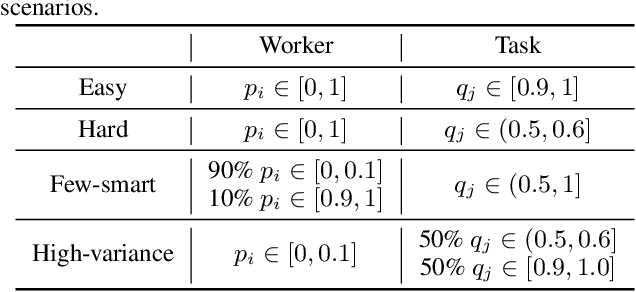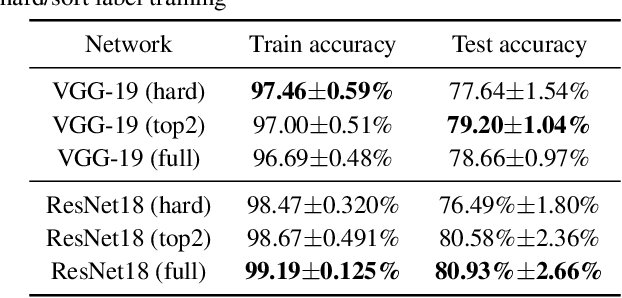Recovering Top-Two Answers and Confusion Probability in Multi-Choice Crowdsourcing
Paper and Code
Dec 29, 2022



Crowdsourcing has emerged as an effective platform to label a large volume of data in a cost- and time-efficient manner. Most previous works have focused on designing an efficient algorithm to recover only the ground-truth labels of the data. In this paper, we consider multi-choice crowdsourced labeling with the goal of recovering not only the ground truth but also the most confusing answer and the confusion probability. The most confusing answer provides useful information about the task by revealing the most plausible answer other than the ground truth and how plausible it is. To theoretically analyze such scenarios, we propose a model where there are top-two plausible answers for each task, distinguished from the rest of choices. Task difficulty is quantified by the confusion probability between the top two, and worker reliability is quantified by the probability of giving an answer among the top two. Under this model, we propose a two-stage inference algorithm to infer the top-two answers as well as the confusion probability. We show that our algorithm achieves the minimax optimal convergence rate. We conduct both synthetic and real-data experiments and demonstrate that our algorithm outperforms other recent algorithms. We also show the applicability of our algorithms in inferring the difficulty of tasks and training neural networks with the soft labels composed of the top-two most plausible classes.
 Add to Chrome
Add to Chrome Add to Firefox
Add to Firefox Add to Edge
Add to Edge